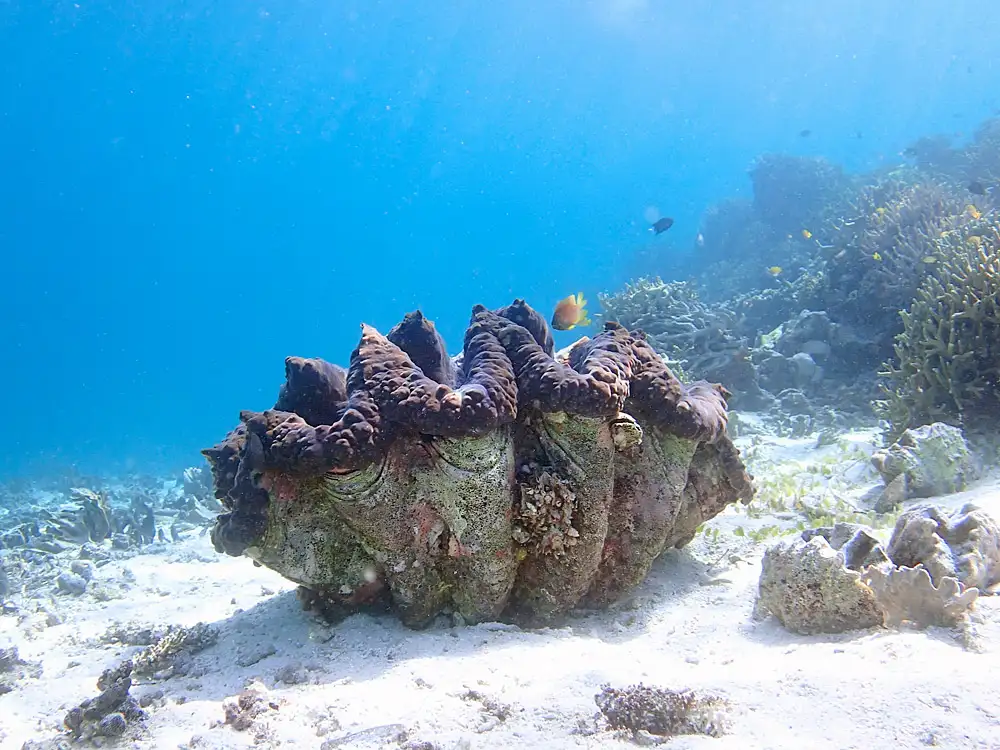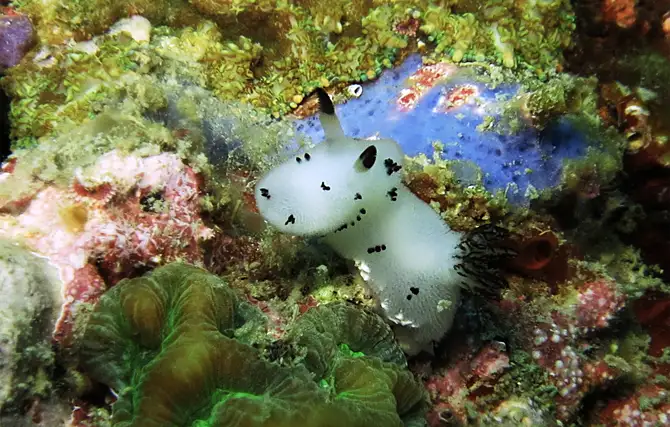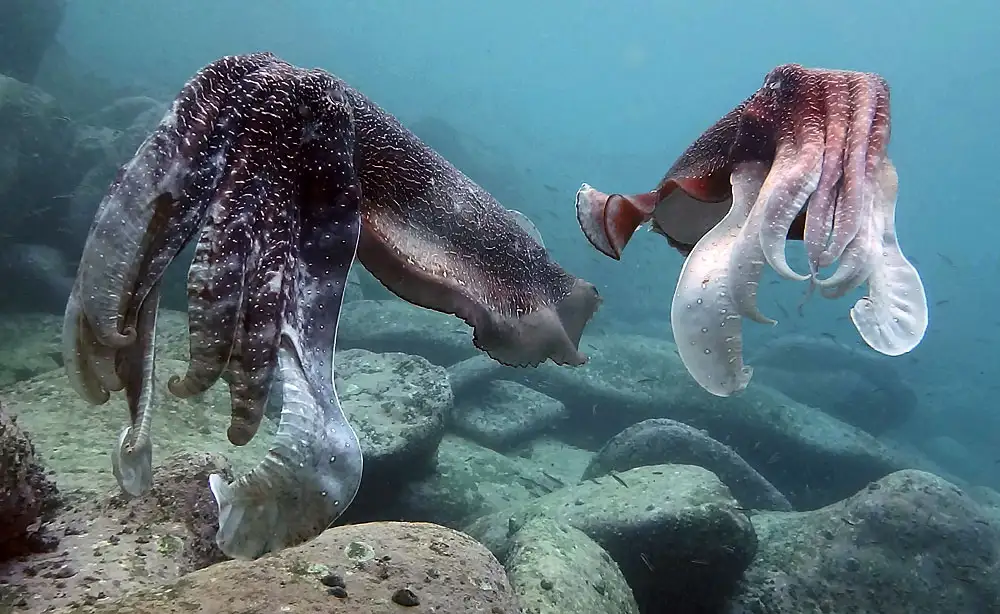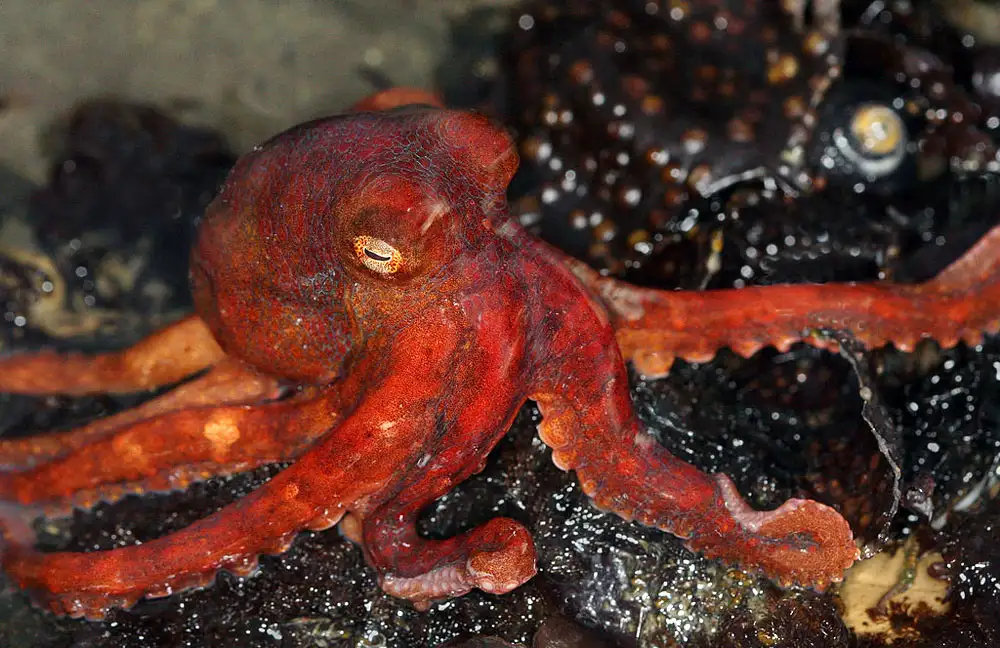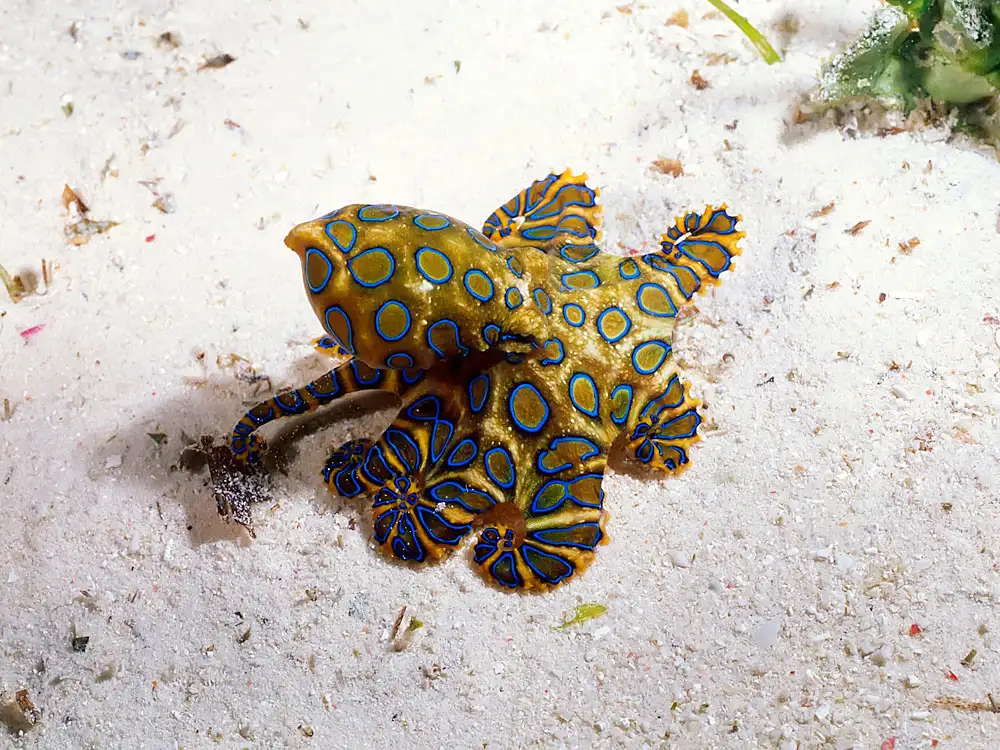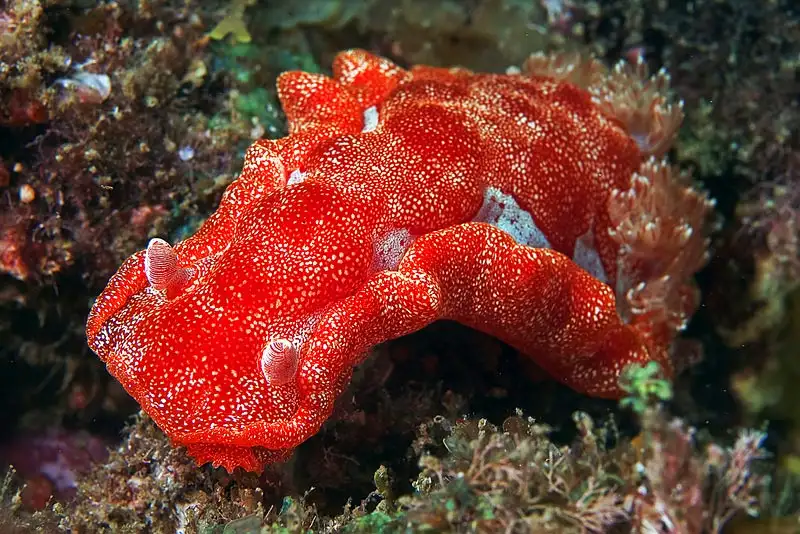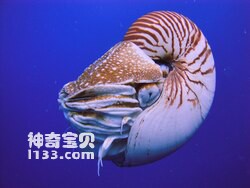Nautilus
IUCN
LCBasic Information
Scientific classification
- name:Nautilus
- Scientific Name:Nautiloidea,Nautilidae
- Outline:Mollusca
- Family:Nautilida Nautilaceae Nautilidae
Vital signs
- length:16-26.8cm
- Weight:
- lifetime:about twenty years
Feature
It is the only existing cephalopod with a complete shell and is also one of the famous marine molluscs.
Distribution and Habitat
Nautilus lives in the vast tropical waters between the Indian Ocean and the Pacific Ocean, and is particularly common in the deep sea. It can be found as far north as southern Japan, as far south as the Great Barrier Reef, as far west as the Andaman Sea, and as far east as Fiji.
Appearance
The nautilus has a colorful appearance, a gorgeous body, and is highly ornamental. Its shell is thin and light, spirally coiled. The surface of the shell is white or milky white. The growth lines radiate from the umbilicus of the shell. It is smooth and dense, mostly reddish brown. The entire spiral shell is as smooth as a disk and shaped like a parrot's beak, hence the name "Nautilus".
Details
Nautilus refers to a family classification under the order Nautilus in the class Cephalopoda. The common features of nautilus are its large number of tentacles, long lifespan, and the use of pinhole imaging eyes. It is the only existing cephalopod with a complete shell. , is also one of the famous marine molluscs. At present, the population of nautilus is relatively rare. Although it is not extinct, its living environment requires special water pressure, making it difficult to breed artificially.
Species of the Nautilus family have experienced hundreds of millions of years of evolution on earth. Their direct ancestors were the top predators in the Ordovician ocean. The modern definition of Nautilus began to appear in the late Triassic period. On Earth. Despite the fact that nautiluses can survive all the mass extinction events on the earth by relying on their average longevity of 20 years and their reproductive strategy of sparing and reproducing, their appearance, habits, ecology, etc. are still the same as those of their ancient ancestors. Its survival time is much longer than most extinct ancient creatures (such as dinosaurs), so it is called a "living fossil". Therefore, the nautilus has high research value in biological evolution and paleontology.
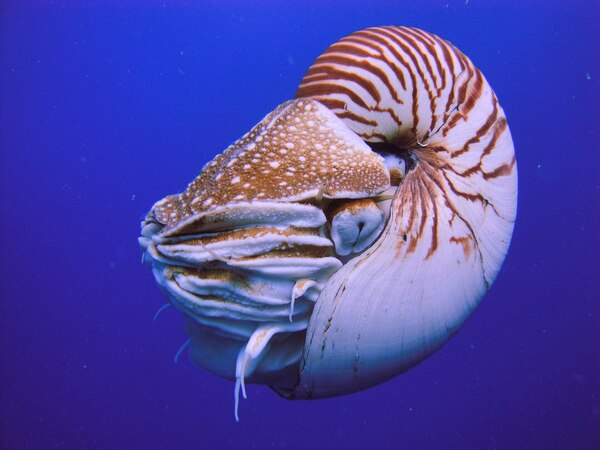
The section of the nautilus shell shows beautiful equiangular spirals, and the equiangular spirals themselves are inseparable from the golden section. This makes the nautilus add many mysterious colors of nature in addition to its bright appearance.
The nautilus is similar in appearance to ordinary cephalopods, with a prominent head and tentacles. But the nautilus has obviously more tentacles, up to 90. The nautilus's tentacles lack suction cups, so their gripping ability is not as good as that of distant relatives such as octopus, cuttlefish and squid, but there is no essential functional difference between them and they can be retracted. The nautilus has a large radula with 9 teeth and two pairs of gills.
Among the surviving cephalopods, only the nautilus has a shell, and no other cephalopod has a shell. Although octopuses such as the octopus also have shells, only the female octopus produces a white shell when laying eggs. To protect the eggs, and the shell and the body can be separated, there will be no shell after the eggs are laid. However, the body and the shell of the nautilus will not be separated.
The shell of the nautilus is divided into more than thirty independent shell chambers by multiple transverse partitions. Except for the last large shell where the animal is located, all of them are filled with gas (mostly nitrogen). As the animal continues to grow, the chambers It also advances outward periodically, secreting calcium carbonate and organic substances behind the mantle to build a new partition. There is a thin tube running through each shell chamber to transport gas into each shell chamber. Through the regulation of gas, the body's floating and migration can be controlled. The special body structure of the Nautilus has also provided inspiration for humans to build submarines. Submarines in many countries are also named after "Nautilus".
Nautilus is a warm-water animal. The suitable water temperature for life is 19-20°C. It usually lives in the ocean at a depth of 50 to 300 meters. It is usually active at night and mostly feeds on the larvae of crustaceans such as small crabs and shrimps that live on the bottom. During the day, they hide in the crevices of shallow coral reefs and rest on the rocks with their tentacles. When the animal dies, its soft body sheds its shell and sinks, and its empty shell drifts with the ocean currents. Studying its drift route has implications for the analysis of ocean currents. certain meaning.
Nautilus are dioecious and oviparous. The female nautilus lays eggs once a year, usually on rocks in shallow water. The incubation period is 12 months. The newly hatched baby nautilus is about 3 cm long.

